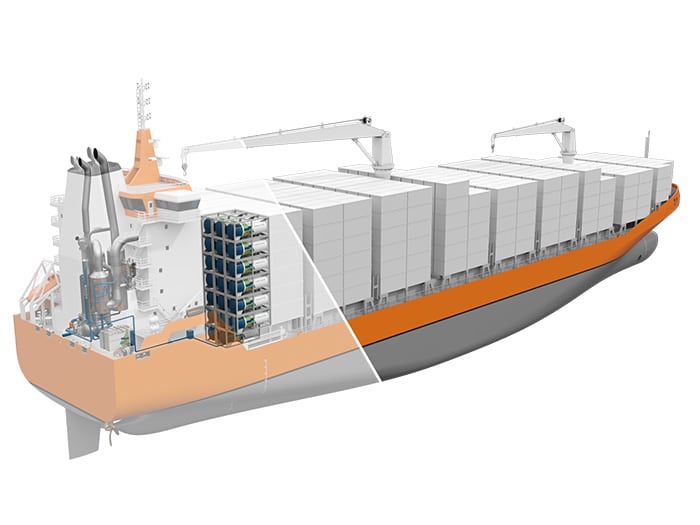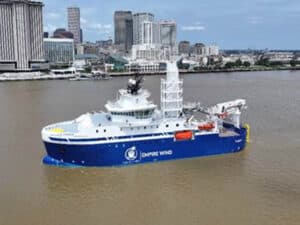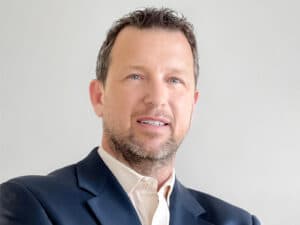
Wärtsilä books its first CCS-ready scrubber order
Written by Nick Blenkey
Rendering shows a full CCS system on a containership, the CCS-ready scrubber solution opens the door for a smooth transition to the full system. [Image: Wärtsilä]
As interest grows in the potential for exhaust gas cleaning systems to scrub out more than sulfur, Wärtsilä has received its first order for carbon capture and storage-ready (CCS-ready) scrubber systems. The scrubbers, each rated at 35 MW, will be installed in four 8,200 TEU container vessels being built at undisclosed Asian based shipyard.
The scrubbers are termed CCS-ready because, as part of their installation, Wärtsilä will perform additional design and engineering work to ensure that future retrofits for a full CCS system on the vessels have already been provided for during the newbuilding construction stage.
Wärtsilä will take measures to ensure adequate space for the future installation of CCS system, incorporate considerations for minimizing idle load and optimizing utilities, and prepare the control and automation system accordingly. The CCS-ready scrubbers will also be designed for integration with a particulate matter (PM) filter.
The CCS-ready scrubber solution ensures that the ship owner is in continuing compliance with SOx emission regulations while opening the door to smooth adoption of a CCS system in the future.
Future-proof
Wärtsilä says that, by installing scrubbers that have been designed with the space and capabilities to have a CCS unit added, is enabling ship owners to future-proof their existing assets, while remaining competitive and compliant.
Scott Oh, Director at Wärtsilä’s Exhaust Treatment Asia, said: “We are very excited to announce this world-first order for our CCS-Ready scrubber solution. By investing in a CCS-Ready scrubber, ship owners will future-proof their assets and enable a smooth transition to CCS adoption once the technology is mature in the very near future. CCS is one of the key solutions to enable maritime decarbonization in a short timeframe, and we look forward to progressing our technology further.”
Wärtsilä is currently testing its CCS system at 70% capture rate and a pilot installation will take place within the next twelve months. It says that, as a technology platform, scrubbers act as a springboard for other environmental abatement technologies to support marine decarbonization. In a CCS-ready configuration, the scrubber will not only tackle SOx emissions but can also be built upon to tackle PM, NOx and the filtration of microplastics. By using a scrubber as the first building block, modification requirements of the tower for CCS integration are minimized and can be accounted for in the design phase.




